Urban farming is a sustainable and innovative solution to the challenge of feeding the growing population of cities around the world. By growing food in urban environments, we can reduce our dependence on imported food supplies and create a more resilient food system. Urban farming is not just about growing food; it is also about building community and creating green spaces in cities.
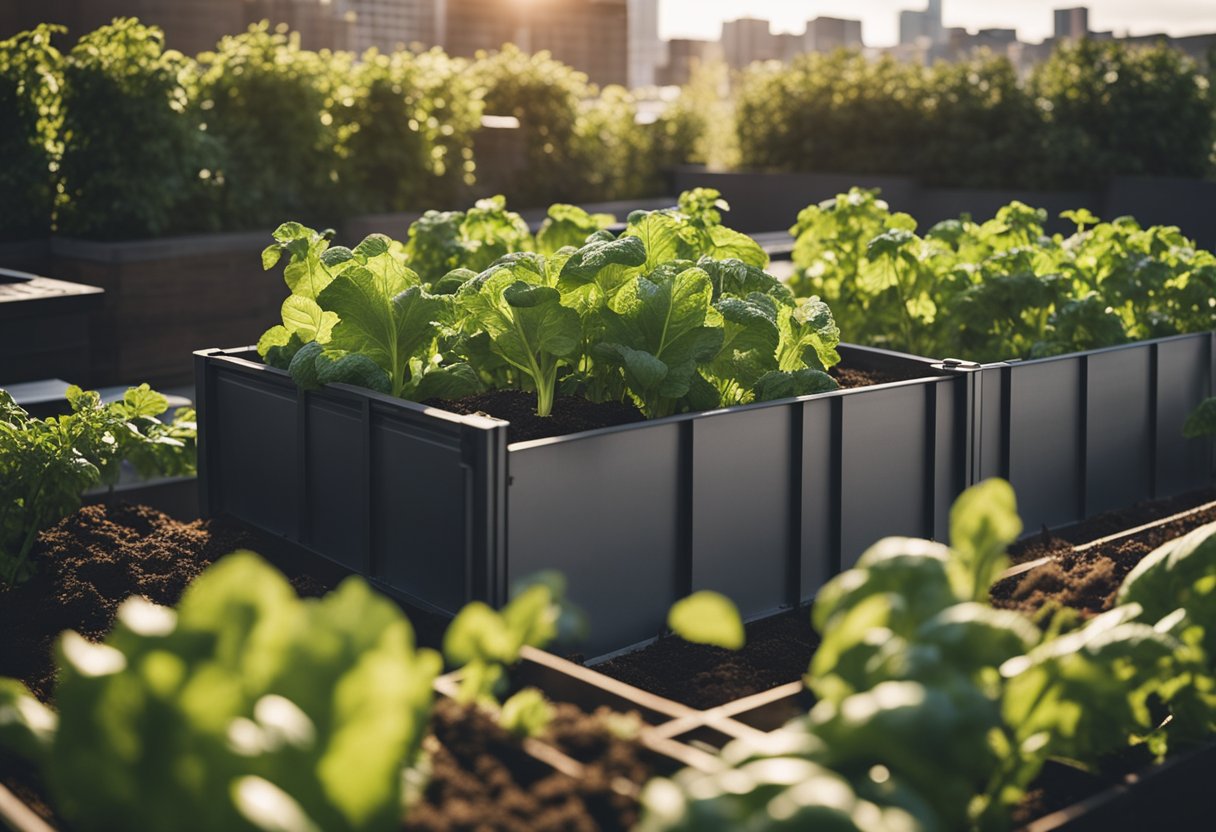
Understanding urban farming is important for anyone who is interested in sustainable agriculture and the future of our food system. Urban farming involves growing food in urban environments using a variety of techniques, including hydroponics, aquaponics, and rooftop gardens. Urban farmers face unique challenges, such as limited space and access to sunlight, but they also have the opportunity to create innovative solutions to these challenges.
Key Takeaways:
- Urban farming is a sustainable solution to the challenge of feeding growing cities.
- Urban farming involves growing food in urban environments using a variety of techniques.
- Urban farmers face unique challenges, but they also have the opportunity to create innovative solutions to these challenges.
Understanding Urban Farming
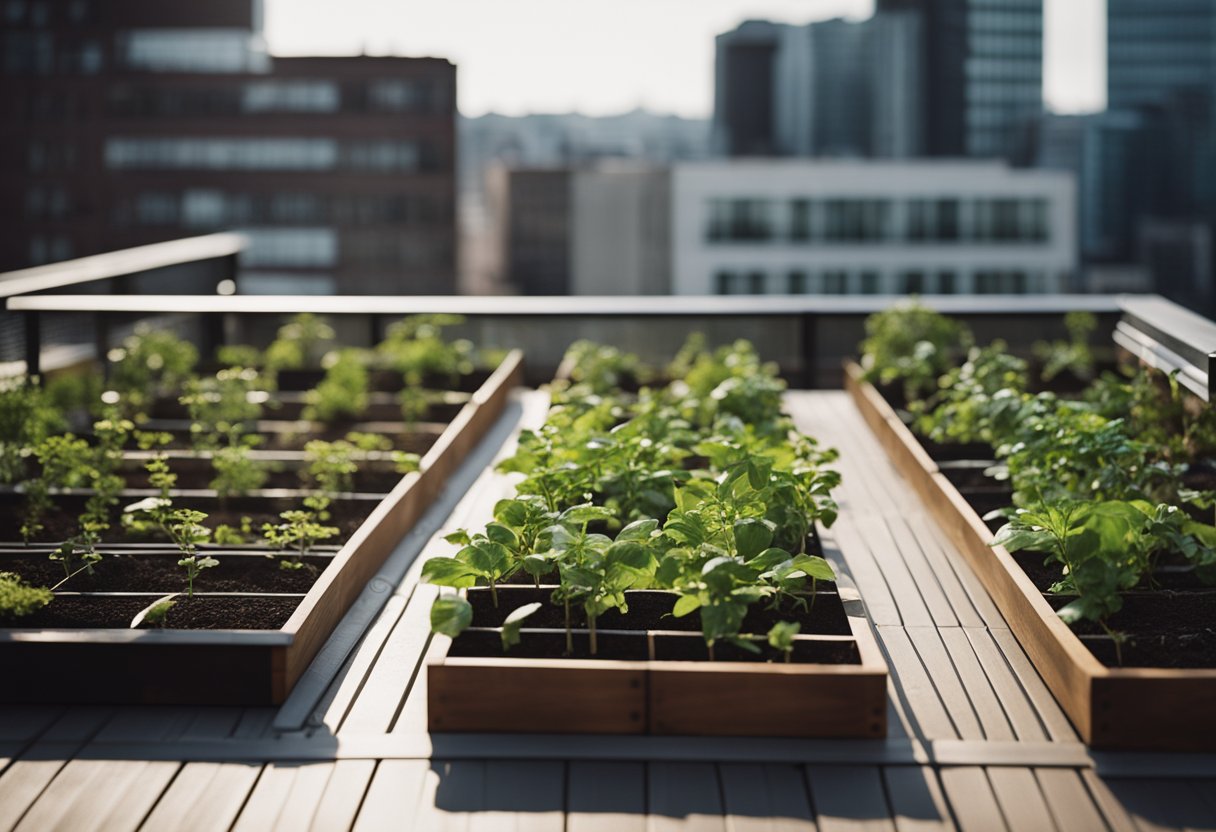
Urban farming is a new trend that is gaining popularity in cities around the world. It is the practice of growing crops and raising animals within city limits. Urban farming can take many forms, including community gardens, rooftop gardens, and indoor farms. The goal of urban farming is to produce fresh, healthy food for people living in cities, while also promoting sustainable agriculture practices.
One of the benefits of urban farming is that it allows people to have access to fresh, healthy food that is grown locally. This can help to reduce the carbon footprint of food production, as well as promote healthy eating habits. Urban farming can also help to reduce food waste, as crops can be harvested as needed, rather than being transported long distances and stored for long periods of time.
Another benefit of urban farming is that it can help to promote sustainable agriculture practices. Many urban farms use organic farming methods, which do not rely on synthetic pesticides and fertilizers. This can help to reduce the negative impact of agriculture on the environment, while also promoting biodiversity in urban areas.
Urban farming can also be a great way to build community and promote social interaction. Community gardens, for example, can bring people together to grow food and share knowledge about gardening. This can help to strengthen social ties and build a sense of community in urban areas.
Overall, urban farming is an exciting new trend that has the potential to transform the way we produce and consume food in cities. By promoting sustainable agriculture practices and building community, urban farming can help to create healthier, more sustainable, and more vibrant cities.
Importance of Urban Farming
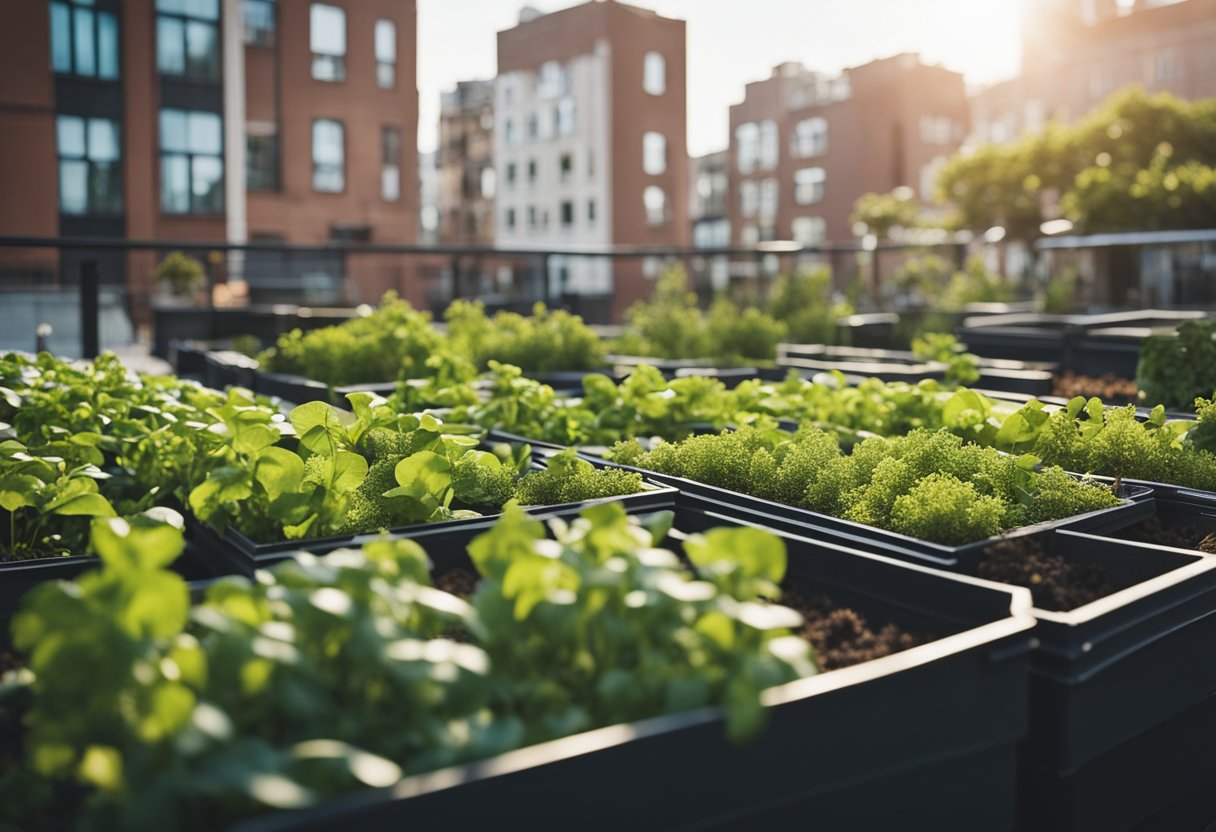
Urban farming is becoming increasingly popular in cities around the world. It is a sustainable and innovative way to produce food, while also providing a range of other benefits. In this section, we will explore the importance of urban farming and its many benefits.
Food Security
Urban farming can help to increase food security in cities. With the growing population, the demand for food is increasing, and urban farming can provide fresh produce, vegetables, and fruits to urban communities. By producing food locally, urban farming reduces the need for long-distance transportation, which can be costly and environmentally damaging.
Sustainability
Urban farming is a sustainable way to produce food. It uses fewer resources than traditional farming methods and reduces the carbon footprint of food production. Urban farming also helps to reduce waste by using food scraps and composting to create nutrient-rich soil.
Community Building
Urban farming brings communities together. Community gardens and urban farms provide a space for people to come together and work towards a common goal. By working together, people can learn new skills, share knowledge, and build relationships.
Education
Urban farming is an excellent way to educate people about food production and sustainability. It provides a hands-on learning experience that can teach people about the importance of healthy eating, resource conservation, and environmental stewardship.
Biodiversity
Urban farming can help to increase biodiversity in cities. By growing a variety of plants, herbs, fruits, and fruit trees, urban farms can provide habitat for bees, butterflies, birds, and other wildlife. This helps to support local ecosystems and promote biodiversity.
Green Spaces
Urban farming can help to create green spaces in cities. By converting unused land into productive farms and gardens, urban farming can help to beautify and green urban areas. Rooftop farms are also becoming increasingly popular in cities, providing a space for food production and greenery.
In summary, urban farming is an innovative and sustainable way to produce food, while also providing a range of other benefits. From food security to community building, education, and biodiversity, urban farming has the potential to transform cities and create a more sustainable future.
Urban Farming Techniques
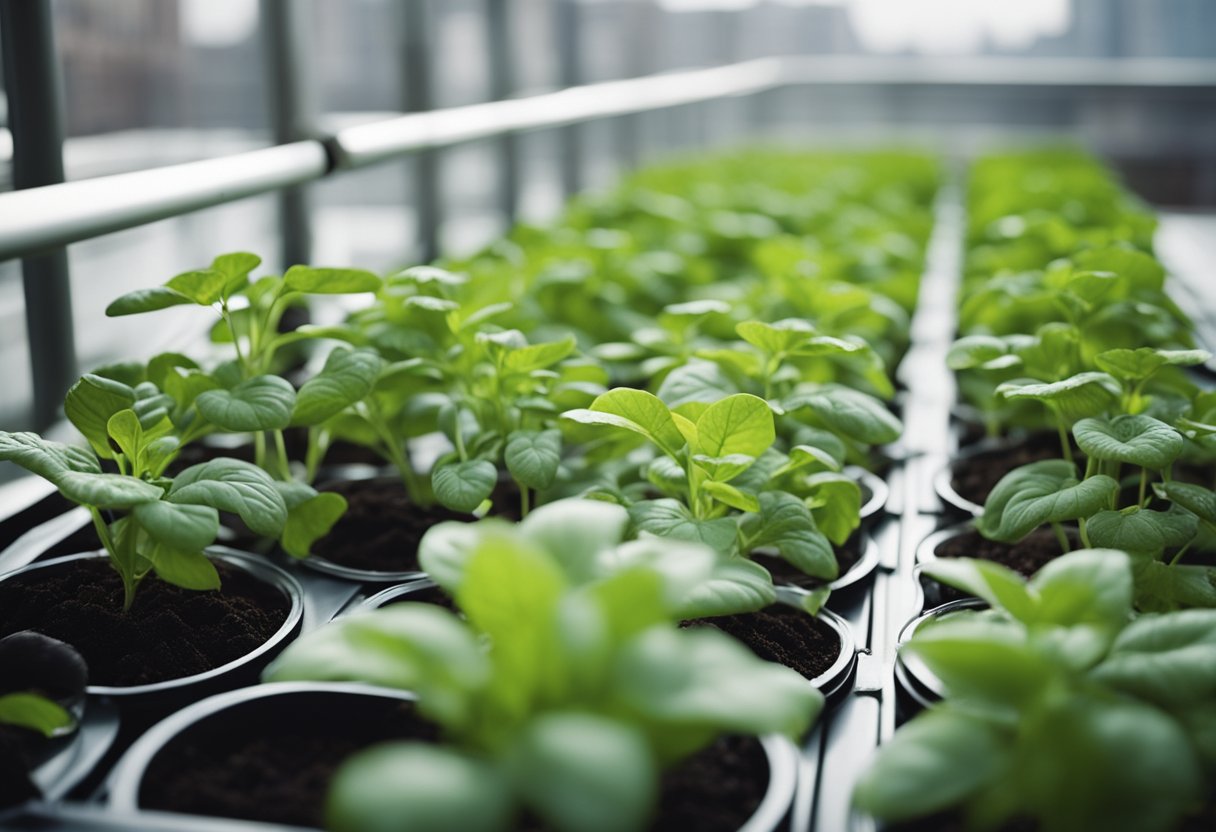
Urban farming is becoming increasingly popular due to the limited land available for traditional farming. Here are a few techniques used in urban farming:
Hydroponic Systems
Hydroponic systems are a popular choice for urban farmers who want to grow crops without soil. Instead, plants are grown in a nutrient-rich water solution. This technique is ideal for areas with limited space, as it allows for vertical farming. Hydroponic systems also use less water than traditional farming methods, making them more sustainable.
Rooftop Farming
Rooftop farming is a technique that involves growing crops on the roof of a building. Rooftop farms are becoming increasingly popular in urban areas, as they can provide fresh produce to the local community. Rooftop farms can also help to reduce the heat island effect in cities, as they absorb heat and provide shade.
Indoor Urban Farming
Indoor urban farming is a technique that involves growing crops inside a building. This technique is ideal for areas with limited space, as it allows for vertical farming. Indoor urban farming also allows farmers to control the environment, which can result in higher yields. Additionally, indoor urban farming can be done year-round, regardless of weather conditions.
Community Gardens
Community gardens are a great way to bring people together and provide fresh produce to the local community. These gardens are typically located in urban areas and are maintained by volunteers. Community gardens can help to improve food security in urban areas and provide a sense of community.
Overall, urban farming techniques are a great way to provide fresh produce to the local community, regardless of space limitations. Whether you choose hydroponic systems, rooftop farming, indoor urban farming, or community gardens, there are plenty of options available to you.
Urban Farming in Singapore
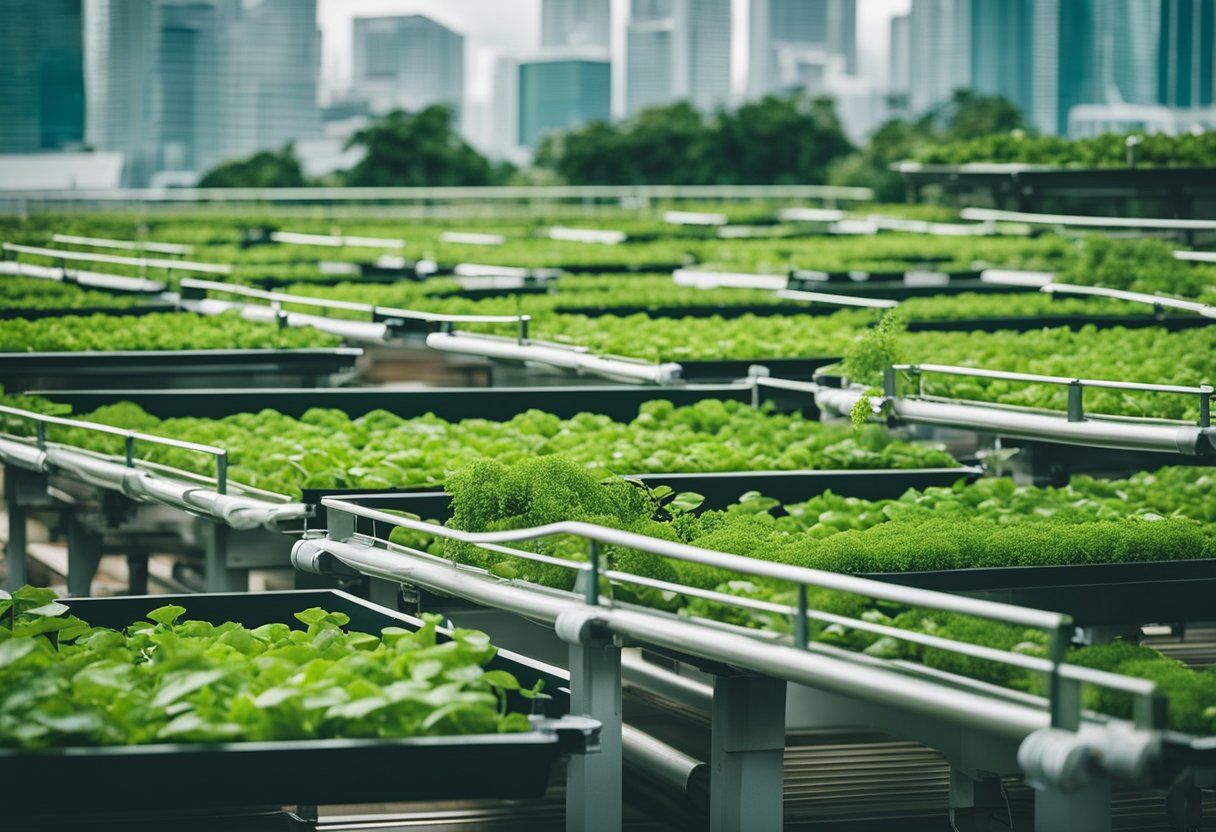
If you’re interested in urban farming, Singapore is a great place to be. Despite being a land-scarce city-state, Singapore has made significant progress in the field of urban farming. In fact, the government aims to produce 30% of its own food by 2030, up from the current 10% [1].
Sky Greens
One of the pioneers of urban farming in Singapore is Sky Greens. They have developed a vertical farming system that allows them to grow vegetables in a sustainable and cost-effective manner. Their system uses a hydraulic water-driven system to rotate the plants, ensuring that each plant gets enough sunlight and water. Sky Greens has won numerous awards for their innovative approach to urban farming [1].
Comcrop
Comcrop is another urban farming company in Singapore that is making waves. They specialize in rooftop farming and have set up farms on rooftops across the city. Comcrop’s farms are equipped with state-of-the-art technology, including hydroponic systems and automated irrigation systems. They grow a variety of crops, including herbs, leafy greens, and microgreens [3].
Edible Garden City
Edible Garden City is a social enterprise that aims to transform urban spaces into edible gardens. They work with schools, businesses, and communities to set up gardens in public spaces. Edible Garden City also runs workshops and educational programs to promote sustainable living and healthy eating. Their gardens are open to the public, and visitors can buy fresh produce directly from the gardens [2].
The Singapore Food Agency (SFA) is the government agency responsible for regulating the urban farming industry in Singapore. They have put in place regulations to ensure that urban farming is safe and sustainable. The authorities have also been supportive of the industry, providing funding and resources to help urban farming companies grow and expand [1].
Overall, urban farming in Singapore is an exciting and rapidly growing industry. With innovative companies like Sky Greens, Comcrop, and Edible Garden City leading the way, there is no doubt that Singapore will continue to make significant progress in this field.
Challenges and Solutions
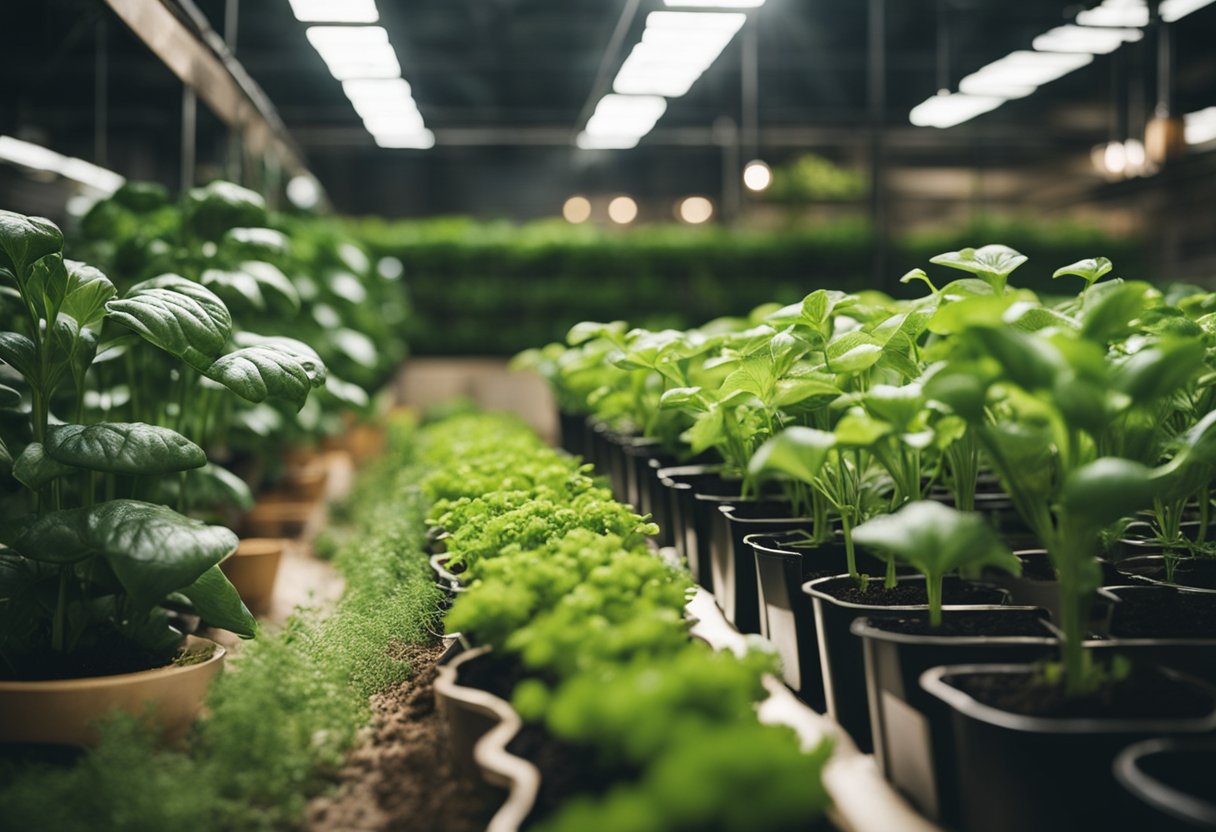
Urban farming is not without its challenges, but with the right solutions, it can be a sustainable and rewarding way to grow your own food. Here are some common challenges you may face when starting your urban farm and some solutions to help you overcome them.
Space and Resource Constraints
One of the biggest challenges of urban farming is the limited space and resources available. You may not have access to large plots of land or the resources needed to grow crops on a large scale. However, there are solutions to help you maximize your space and resources.
- Vertical gardening: Growing plants vertically can help you make the most of limited space. You can use trellises, walls, and other structures to support your plants and grow them upwards instead of outwards.
- Container gardening: Container gardening is another way to grow plants in small spaces. You can use pots, buckets, and other containers to grow plants on balconies, rooftops, and other small areas.
- Hydroponics: Hydroponics is a method of growing plants without soil. Instead, plants are grown in nutrient-rich water solutions. This method can be used to grow plants indoors, in small spaces, and in areas with poor soil quality.
Pests and Diseases
Pests and diseases can quickly destroy your crops if left untreated. However, there are ways to prevent and control pests and diseases without relying on chemical pesticides.
- Companion planting: Companion planting is the practice of planting certain crops together to help repel pests and attract beneficial insects. For example, planting marigolds with tomatoes can help repel nematodes.
- Integrated pest management: Integrated pest management is a holistic approach to pest control that involves using a combination of methods to prevent and control pests. This may include using physical barriers, such as netting or row covers, and introducing beneficial insects, such as ladybugs or praying mantises.
- Organic pesticides: If you do need to use pesticides, opt for organic options that are less harmful to the environment and beneficial insects. For example, neem oil can be used to control aphids and other pests.
Labour and Time
Urban farming can be time-consuming and labor-intensive, especially if you are growing a large number of crops. However, there are ways to save time and effort while still growing a successful garden.
- Automate watering: Installing a drip irrigation system or using a self-watering container can help save time and effort when it comes to watering your plants.
- Use mulch: Mulch can help retain moisture in the soil and prevent weeds from growing. This can help reduce the amount of time and effort needed for weeding and watering.
- Choose low-maintenance crops: Some crops require less maintenance than others. For example, herbs and leafy greens are generally easier to grow and require less maintenance than fruiting crops like tomatoes or peppers.
By addressing these common challenges, you can create a successful and sustainable urban farm that provides you with fresh, healthy produce all year round.
Future of Urban Farming
Urban farming is a promising solution to the challenges of food security and sustainability in urban areas. As the world’s population continues to grow, and urbanization increases, urban farming is becoming an essential part of the solution to feed the world. In the future, urban farming will be more innovative, regulated, and supported by authorities.
Innovations and Technology
Innovations and technology are driving the future of urban farming. With the help of technology, urban farmers are growing crops in vertical farms, hydroponic systems, and aeroponic systems. These systems use less water and space and produce higher yields than traditional farming methods. In the future, innovations in lighting, automation, and data analytics will make urban farming more efficient and profitable.
Regulations and Authorities
Regulations and authorities are also critical for the future of urban farming. Many cities are now implementing regulations to support urban farming, including zoning laws, building codes, and tax incentives. Authorities are also providing funding and support for urban farming projects. In the future, we can expect to see more regulations and support for urban farming as it becomes an essential part of the solution to feed the world.
In conclusion, the future of urban farming is exciting. With the help of technology and support from authorities, urban farming will continue to grow and become an essential part of the solution to feed the world. As an urban dweller, you can support urban farming by buying produce from local urban farms or starting your own urban farm.
Frequently Asked Questions
What are some innovative ways to implement urban farming in small spaces?
There are several innovative ways to implement urban farming in small spaces. One way is through the use of vertical farming, which involves growing crops in stacked layers. Another method is hydroponics, which is the practice of growing plants in nutrient-rich water instead of soil. Additionally, rooftop farming and community gardens are other ways to utilize small spaces for urban farming.
What are the benefits of urban farming for the environment and community?
Urban farming has numerous benefits for both the environment and community. It promotes sustainable living by reducing the carbon footprint associated with transporting food long distances. It also helps to reduce waste by utilizing unused spaces for farming. Urban farming also provides fresh and healthy produce to communities, which can help to improve public health and nutrition.
How can urban farming contribute to food security in cities?
Urban farming can contribute to food security in cities by providing fresh produce to communities that may not have access to healthy food options. It can also help to reduce the reliance on imported food, which can be costly and unsustainable. Additionally, urban farming can create jobs and stimulate local economies, which can further contribute to food security.
What are some challenges faced by urban farmers and how can they be overcome?
Urban farmers face several challenges, including limited space, lack of access to resources, and zoning regulations. These challenges can be overcome through innovative farming techniques, such as vertical farming and hydroponics, as well as community partnerships and advocacy for policy change.
What are some successful examples of urban farming initiatives around the world?
There are several successful examples of urban farming initiatives around the world. In Singapore, there are rooftop farms and community gardens that provide fresh produce to residents. In Detroit, Michigan, urban farming has helped to revitalize blighted neighborhoods and provide job opportunities. In Havana, Cuba, urban farming has helped to address food shortages and improve public health.
How can urban farming be integrated into urban planning and development?
Urban farming can be integrated into urban planning and development through the inclusion of green spaces and community gardens in city plans. Additionally, zoning regulations can be adjusted to allow for urban farming, and incentives can be provided for developers to include green spaces in their projects. Community partnerships and education can also help to promote urban farming as a viable and sustainable option for cities.




